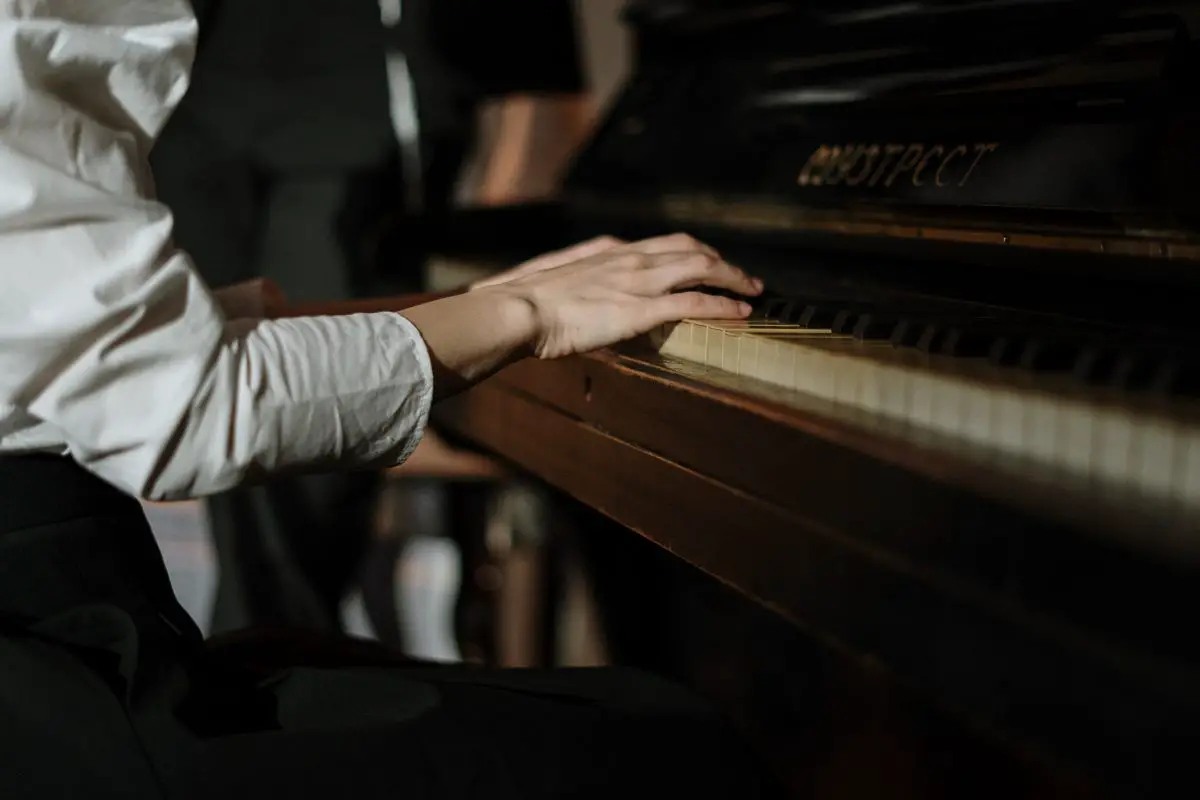Ready to dive into the fascinating world of bitonality? Ever wondered how it’s possible to be in two key centers at once? Hold on tight as we unravel the secrets of bitonality and discover a whole new dimension of musical expression. Are you ready to challenge traditional boundaries and explore the intersection of two tonalities? Let’s go!
What does bitonality mean? Bitonality is the mesmerizing phenomenon of playing in two key centers simultaneously, defying the conventional notion of sticking to a single key. It’s like having two tonal homes blending together to create a harmonious and captivating musical journey.
What is bitonality in music?
Bitonality refers to the simultaneous use of two different key centers or tonalities within a musical composition or passage. It occurs when two distinct tonalities or keys are employed simultaneously, creating a sense of tension or dissonance. Each key center typically has its own set of pitches, chords, and harmonic progressions.

Bitonality can be achieved in various ways. One common approach is through the use of different instruments or musical sections playing in different keys. Another method involves the superimposition of different melodic and harmonic structures that belong to different tonalities.
The effect of bitonality can vary depending on the context and the composer’s intention. It can create a sense of ambiguity, disorientation, or heightened tension. The clash between the two tonalities can produce dissonant harmonies and unusual melodic relationships. Bitonality is often used in avant-garde, modern, and experimental music to challenge traditional tonal conventions and create unique and innovative soundscapes.
AKAI Professional MPK Mini MK3

AKAI Professional MPK Mini MK3
How is bitonality used in music?
Bitonality can be found in a variety of musical genres and styles, including classical, jazz, and contemporary music. It allows composers to explore unique harmonic possibilities, create dissonant or ambiguous sounds, and evoke specific moods or emotions.
Here are a few examples of how bitonality is used in music:
- Symphony No. 2: Samuel Barber’s Symphony No. 2 incorporates bitonality, among other techniques, to create a rich and complex musical texture.
- Mikrokosmos Volume 5: Béla Bartók’s Mikrokosmos Volume 5, specifically the piece “Boating,” uses bitonality by having the right hand play in the key of E♭ Dorian while the left hand plays in either G Mixolydian or Dorian.
- The Rite of Spring: Igor Stravinsky’s The Rite of Spring contains sections with bitonal elements, combining different keys simultaneously to create a sense of rhythmic and harmonic tension.
- Round Midnight: Jazz pianist Thelonious Monk often incorporated bitonality in his compositions, such as in his famous tune Round Midnight, which features the juxtaposition of different tonal centers.
- Glass’ Symphony No. 2: In the realm of contemporary music, composers like Philip Glass have used bitonality to create a sense of ambiguity and explore new harmonic possibilities. Glass’ Symphony No. 2 is an example of his use of bitonality.
Here are more examples of songs with bitonality. This data provides insight into the diversity of bitonality applications across different composers and periods.
| Composer | Composition Title | Year | Key 1 | Key 2 |
|---|---|---|---|---|
| Igor Stravinsky | Petrushka | 1911 | C Major | F# Major |
| Darius Milhaud | Saudades do Brasil | 1921 | D Major | Bb Major |
| Béla Bartók | Out of Doors | 1926 | B Minor | D Major |
| Charles Ives | Three Places in New England | 1914 | E Major | C Major |
| Maurice Ravel | Ma mère l’Oye | 1910 | G Major | E Major |
| Paul Hindemith | Ludus Tonalis | 1942 | F# Major | Bb Minor |
| Heitor Villa-Lobos | Bachianas Brasileiras No. 9 | 1945 | E Minor | G Major |
It’s worth noting that bitonality is closely related to polytonality, which refers to the use of more than two different keys simultaneously. Both techniques offer composers expanded harmonic palettes and the ability to experiment with contrasting tonalities.
How to play bitonality
To play bitonality, you can follow various approaches depending on your instrument and musical context. Here are some general guidelines:
1. Understanding bitonality
Familiarize yourself with the concept of bitonality and its principles. Bitonality involves combining two different keys or tonalities to create tension, dissonance, or unique harmonic effects in a composition.
2. Study music theory
Develop a strong foundation in music theory to understand how different keys relate to each other and how they can be combined. This knowledge will help you navigate the complexities of playing in two keys simultaneously.
3. Choose the right context
Determine the musical context in which you want to explore bitonality. It is commonly found in jazz, contemporary classical music, and certain avant-garde styles. However, it can be applied to various genres depending on your creativity and the desired musical effect.
Analyzing scores and recordings of such pieces will help you identify common techniques, chord progressions, and melodic patterns used in bitonal music.
4. Analyze bitonal pieces
Listen to and study compositions that incorporate bitonality to gain a deeper understanding of how it is implemented. Analyzing scores and recordings of such pieces will help you identify common techniques, chord progressions, and melodic patterns used in bitonal music.
5. Experiment with chords and progressions
Start by exploring chords and progressions in each key individually. Once you are comfortable with the harmonic language of both keys, experiment with combining chords from different keys to create unique harmonic progressions. Pay attention to the tension and resolution created by the clash between the two tonalities.
6. Melodic and improvisational approaches
Incorporate bitonality into your melodies and improvisations. Experiment with using notes from both keys simultaneously or alternating between the two keys to create contrasting melodic ideas. This can add a distinct flavor and unpredictability to your musical phrases.
7. Practice with accompaniment
Play along with backing tracks or other musicians to develop your ability to play bitonally in a real-time musical setting. Practicing with accompaniment will help you refine your sense of harmony, timing, and overall musicality.
Remember, bitonality can be a complex and challenging technique to master, so it requires patience, practice, and a good understanding of music theory. Don’t be afraid to experiment and explore your own creative ideas within the realm of bitonality.

Advantages and disadvantages of bitonality
Exploring the concept of bitonality, a subset of polytonality, opens up an interesting avenue in music. Bitonality refers to the simultaneous use of two different keys in a musical composition. As with most techniques, employing bitonality has both benefits and drawbacks, which can significantly influence the overall sound and reception of the music.
Advantages of bitonality
Bitonality introduces a novel dimension to musical compositions by offering a palette of fresh harmonic possibilities. Below are some of its notable advantages:
- Broadened Expressive Range: The simultaneous use of two keys can enrich the emotional and dramatic impact of the piece, adding a layer of complexity and depth.
- Enhanced Musical Interest: Bitonality can intrigue listeners, fostering a unique sense of musical surprise and interest by defying traditional tonal expectations.
- Cultural Significance: In certain cultural contexts, bitonality forms the basis of traditional music styles, such as Lithuanian sutartines and certain Indian tribal music, serving as a critical element of cultural identity.
- Increased Musical Vocabulary: As seen in Béla Bartók’s work, bitonality can serve to increase a composer’s range of musical expression, including the utilization of different scale types for a more diverse sonic texture.
Disadvantages of bitonality
However, bitonality is not without its challenges and potential downsides. Here are some of the cons associated with it:
- Listener’s Discomfort: The unexpected shifts in key may disorient some listeners, particularly those accustomed to traditional, homotonal music.
- Complexity in Composition and Performance: Bitonality requires a deeper understanding of music theory, making the composition and performance process potentially more difficult for both composers and musicians alike.
- Potential Lack of Cohesion: Without careful handling, the use of two keys might lead to a perceived lack of unity within the piece, leading to an impression of disjointedness or chaos.
- Difficulties in Harmonization: Aligning two different keys to create a pleasing harmonic blend can be challenging and may not always result in the desired effect.
If you want even more great tips and information, watch this video called “Playing in 3 keys at once – Bitonality – Polytonality” from the Paul Wilkinson – Musician YouTube channel.
Frequently asked questions (FAQ)
Do you still have questions about what bitonality means? Below are some of the most commonly asked questions.
Can I use bitonality in any genre of music?
Bitonality can be utilized in a wide range of music genres, including classical, jazz, rock, electronic, and more. It offers a unique and creative approach to harmonies and can add depth and complexity to any musical style.
Is it challenging to transition from playing in a single key to incorporating bitonality in my compositions?
While bitonality introduces new challenges, it’s an exciting journey worth exploring. As with any new concept, it may require some time and experimentation to adapt your musical mindset and fully grasp the techniques involved. However, with practice and a willingness to step outside your comfort zone, you can embrace bitonality and unlock a whole new world of musical possibilities.
Are there any specific techniques or strategies I should focus on when incorporating bitonality into my compositions?
Exploring the tritone progression, blending inside and outside tonalities, and harmonically integrating the different key centers are essential techniques when working with bitonality. Additionally, studying the works of composers who have successfully implemented bitonality can provide valuable insights and inspiration for your own compositions.
Conclusion
Remember, bitonality is a powerful tool that can enhance your musical creations and spark your creativity. Embrace the challenge, push your boundaries, and let your unique musical voice shine through the harmonious blend of contrasting tonalities. Keep creating, keep exploring, and enjoy the musical journey ahead!
And did I cover everything you wanted to know? Let me know in the comments section below (I read and reply to every comment). If you found this article helpful, share it with a friend, and check out my full blog for more tips and tricks on music production. Thanks for reading, and may your music always be harmonious!
Key takeaways
This article covered the concept of bitonality and its application in music production. Here are some key takeaways:
- Bitonality refers to the simultaneous use of two different key centers or tonalities in music, creating tension and dissonance.
- It can be achieved through different instruments playing in different keys or the superimposition of different melodic and harmonic structures.
- Bitonality is commonly used in avant-garde, modern, and experimental music to challenge traditional tonal conventions and create unique soundscapes.
- To explore bitonality, it’s important to understand music theory, analyze bitonal pieces, experiment with chords and progressions, incorporate it into melodies and improvisations, and practice with accompaniment.















